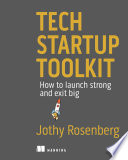

The startup ecosystem is a complex network of various stakeholders, including entrepreneurs, investors, mentors, and service providers. Understanding this ecosystem is crucial for aspiring entrepreneurs as it helps them navigate the various resources available. The book emphasizes the importance of building relationships within this ecosystem, as networking can lead to valuable partnerships, mentorship opportunities, and funding sources. It outlines the different types of funding available, such as bootstrapping, angel investing, venture capital, and crowdfunding, and discusses the pros and cons of each. Furthermore, it highlights the role of incubators and accelerators, which can provide startups with essential support in their early stages. By gaining insight into the startup ecosystem, entrepreneurs can better position themselves for success.
Continue readingA strong business model is the backbone of any successful startup. The book outlines various business model frameworks, such as the Business Model Canvas, which helps entrepreneurs visualize and iterate on their business ideas. It stresses the importance of identifying a target market, understanding customer needs, and defining a unique value proposition. The author encourages readers to validate their business model through market research and testing before fully committing to it. Additionally, the book emphasizes the significance of revenue streams, cost structures, and key partnerships in creating a sustainable business model. By focusing on these elements, entrepreneurs can develop a roadmap that guides their startup toward profitability.
Continue readingThe concept of a Minimum Viable Product (MVP) is central to the lean startup methodology. The book explains that an MVP is a simplified version of a product that allows entrepreneurs to test their hypotheses in the market with minimal resources. It encourages entrepreneurs to focus on core functionalities that address the primary pain points of their target audience. The author discusses various techniques for gathering user feedback and iterating on the product based on that feedback. This iterative process not only helps in refining the product but also reduces the risk of building something that does not meet market needs. By launching an MVP, startups can validate their ideas quickly and efficiently, allowing for more informed decision-making.
Continue readingMarketing is essential for the growth and visibility of a startup. The book outlines various marketing strategies tailored for startups, emphasizing the importance of digital marketing in today's landscape. It covers topics such as content marketing, social media engagement, search engine optimization (SEO), and email marketing. The author also discusses the significance of building a brand identity and creating a compelling narrative that resonates with the target audience. Additionally, the book highlights the importance of data analytics in measuring marketing effectiveness and adjusting strategies accordingly. By implementing effective marketing strategies, startups can build a loyal customer base and enhance their market presence.
Continue readingNavigating the world of fundraising is a critical skill for startup founders. The book provides insights into the various stages of fundraising, from seed funding to Series A and beyond. It discusses how to prepare for investor meetings, create compelling pitch decks, and negotiate terms. Furthermore, the author emphasizes the importance of financial management, including budgeting, forecasting, and cash flow management. Understanding financial metrics is crucial for making informed decisions and sustaining growth. The book also touches on the potential pitfalls of fundraising, such as overvaluation and dilution of ownership, encouraging entrepreneurs to approach fundraising with a strategic mindset.
Continue readingA startup's success is often determined by the strength of its team and the culture it cultivates. The book discusses the importance of hiring the right talent and creating a diverse and inclusive work environment. It emphasizes the role of leadership in fostering a positive company culture that encourages collaboration, innovation, and accountability. The author provides practical tips for onboarding new employees and maintaining team morale, especially during challenging times. Moreover, the book highlights the significance of clear communication and setting expectations to ensure alignment among team members. By investing in their team and culture, startups can drive better performance and achieve their goals.
Continue readingOnce a startup has established a product-market fit, the next challenge is scaling the business. The book outlines strategies for scaling operations, including optimizing processes, expanding the customer base, and exploring new markets. It discusses the importance of maintaining quality and customer satisfaction during the scaling phase. The author also highlights the need for strategic planning and resource allocation to ensure sustainable growth. Additionally, the book touches on the challenges that come with scaling, such as managing increased complexity and potential burnout among team members. By understanding the dynamics of scaling, entrepreneurs can better prepare their startups for growth.
Continue reading